Simply put, sightseeing suggests a visit made by a group of outsiders to a place where they get to meet local people and produce. It brings about the need to serve these visitors, which in turn gives birth to the business model, known as the tourism industry. The rise of tourism in Taiwan’s indigenous regions can be traced back as early as the Japanese colonial period (1895-1945). Now it has been not uncommon for indigenous people to develop local tourism in their communities. In modern times, however, as more and more large scale commercial development projects are being launched in indigenous communities, residents are confronted by emerging problems such as deprivation of traditional territories and unequal distribution of resources; which has provoked increasing opposition among indigenous communities across the island.

The Golden Sea Resort Hotel at Shanyuan Bay, Taitung County
Development area & facilities: 11.3 hectares with 500 rooms
Status: The Environmental Impact Comparative Analysis has been rejected for 7 times.

The Shanyuan Yacht Harbor, Taitung County
Status: EIA was passed in 1997. The project is currently suspended.
The Miramar Resort Village, Taitung County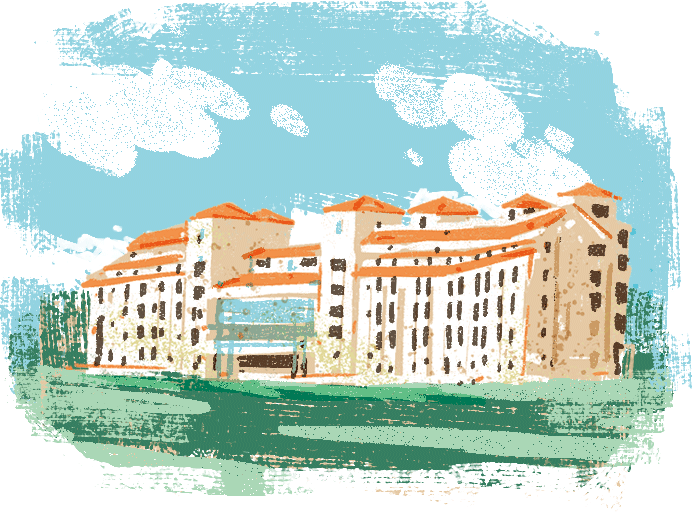
Development area & facilities: 5.9 hectares with 80 rooms
Status: The project has been ruled illegal and construction was terminated. Appeals are launched by the developer.
The Shanyuan Palm Beach Resort, Taitung County
Development area & facilities: 26 hectares with 30 villas and 550 rooms
Status: Construction was halted due to the violation of Indigenous Peoples Basic Law
The Dulanbi Recreation Area, Taitung County
Development area & facilities: 30 hectares with 20 cabins and 300 rooms
Status: The project was suspended due to strong opposition from local communities.
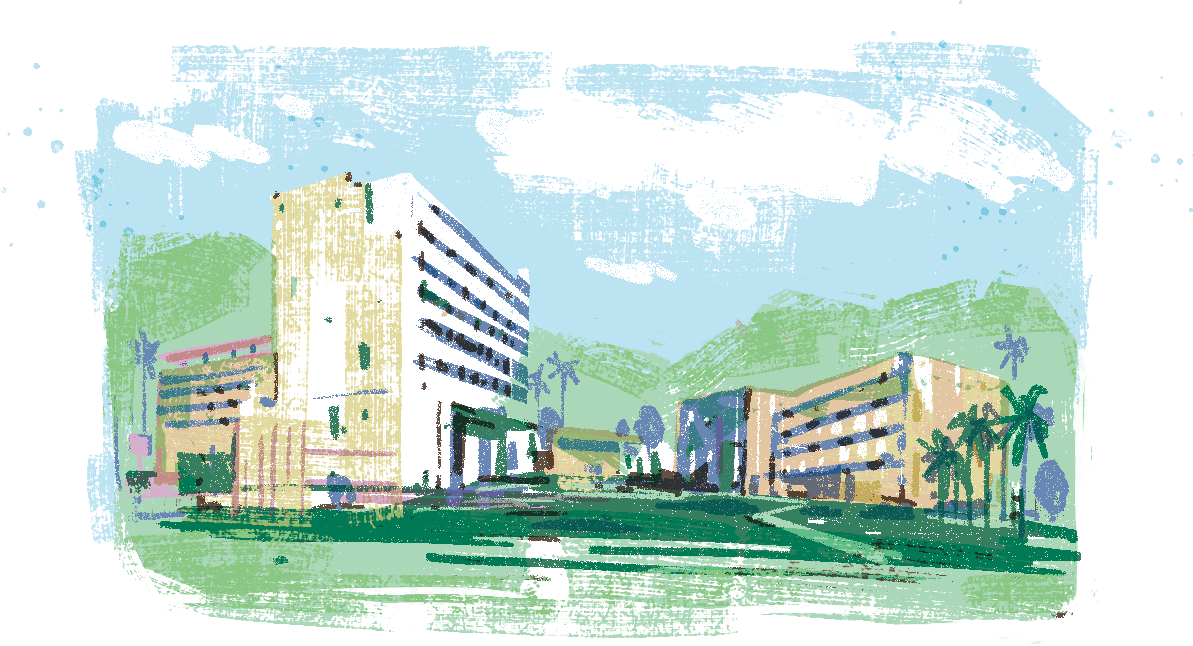
Mandifu Resort, Taitung County
Development area & facilities: 10 hectares with 200 rooms
Status: Construction has not yet begun since the completion of soil and water
Hsu-ta Tourist Hotel, Taitung County
Development area & facilities: 8.9 hectares with 180 rooms
Status: EIA was approved with conditions in 2010. Construction has not yet begun since then.
Peacock Garden Hotel at Sun Moon Lake, Nantou County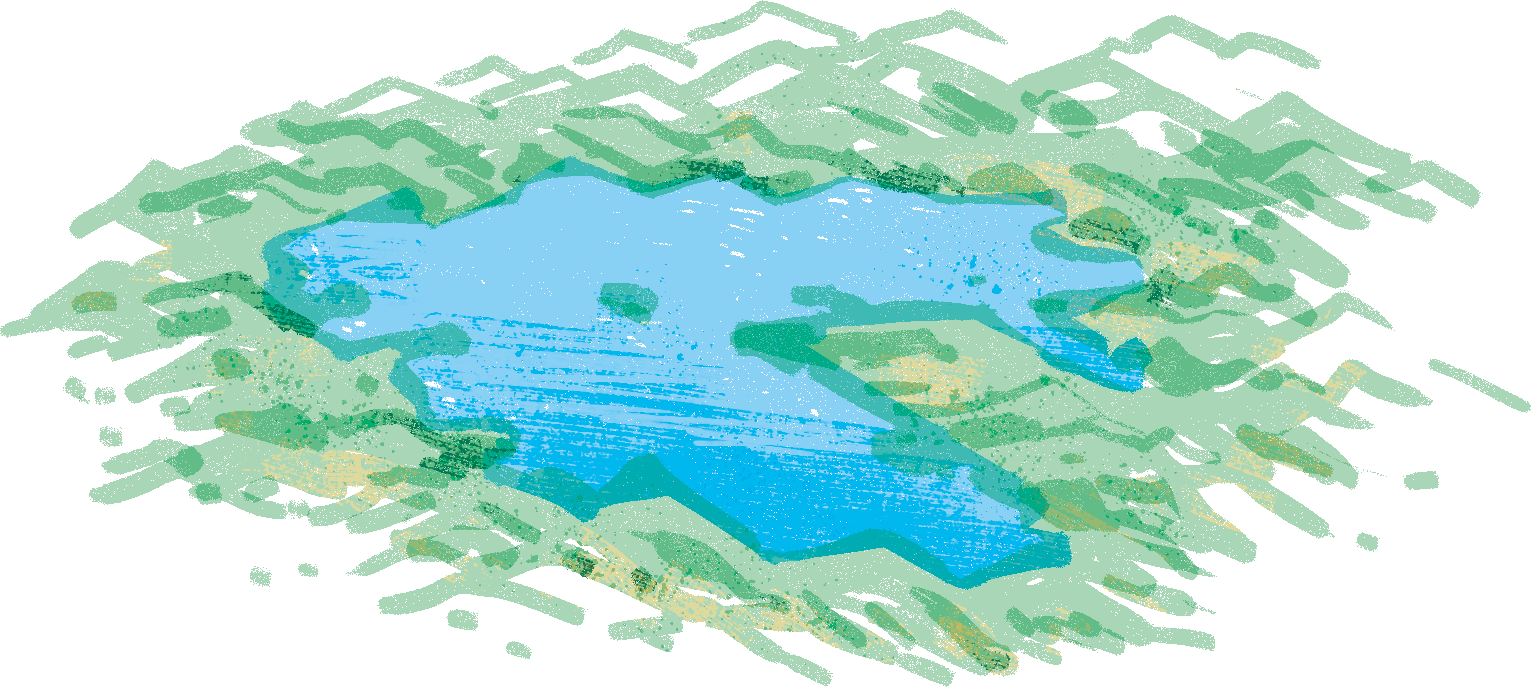
Development area & facilities: 1.6 hectares with a minimum of 200 rooms
Status: The Nantou county government ruled that EIA be redone.
The development of tourism has had a direct impact on local economies and industries. The link-up of various sectors, from transport service, catering arrangements, accommodation experiences to guided tours, contributes to the appearance of sightseeing activities. Some indigenous communities form their own business networks by incorporating a series of services including personal van transport, handmade local cuisine, homestay accommodation, and guided local tours,. While others roll out theme-based in-depth travel, cultural experiences, or mini-tours that integrate catering and guided tours. Which in turn creates a mutually beneficial business model among participant parties. Currently, many of these sightseeing activities are not planned and managed by indigenous communities themselves, but by outside travel agents or tourists, who enter communities without authorization. This not only brings no positive benefits to communities but will disturb the lives of residents ,and even result in misunderstandings about the profound significance of indigenous cultures.
Another serious impact is that they may cause substantial changes to the living spaces of community residents. Take, for example, those large-scale development projects in indigenous people’s traditional territories without any prior notice and negotiation. What such construction projects imply are potential business opportunities and profit. Major commercial activities are designed to attract tourists to spend money, which creates significant economic benefits. But the process of land development will inevitably impose an impact on the environment and ecology. The massive inflow of tourists following the completion of developments increases the burden on road traffic and lead to significant demands for water. The living space and resources of community residents are thus squeezed. Most importantly, a fundamental controversy is aroused: the legality of land acquisition.
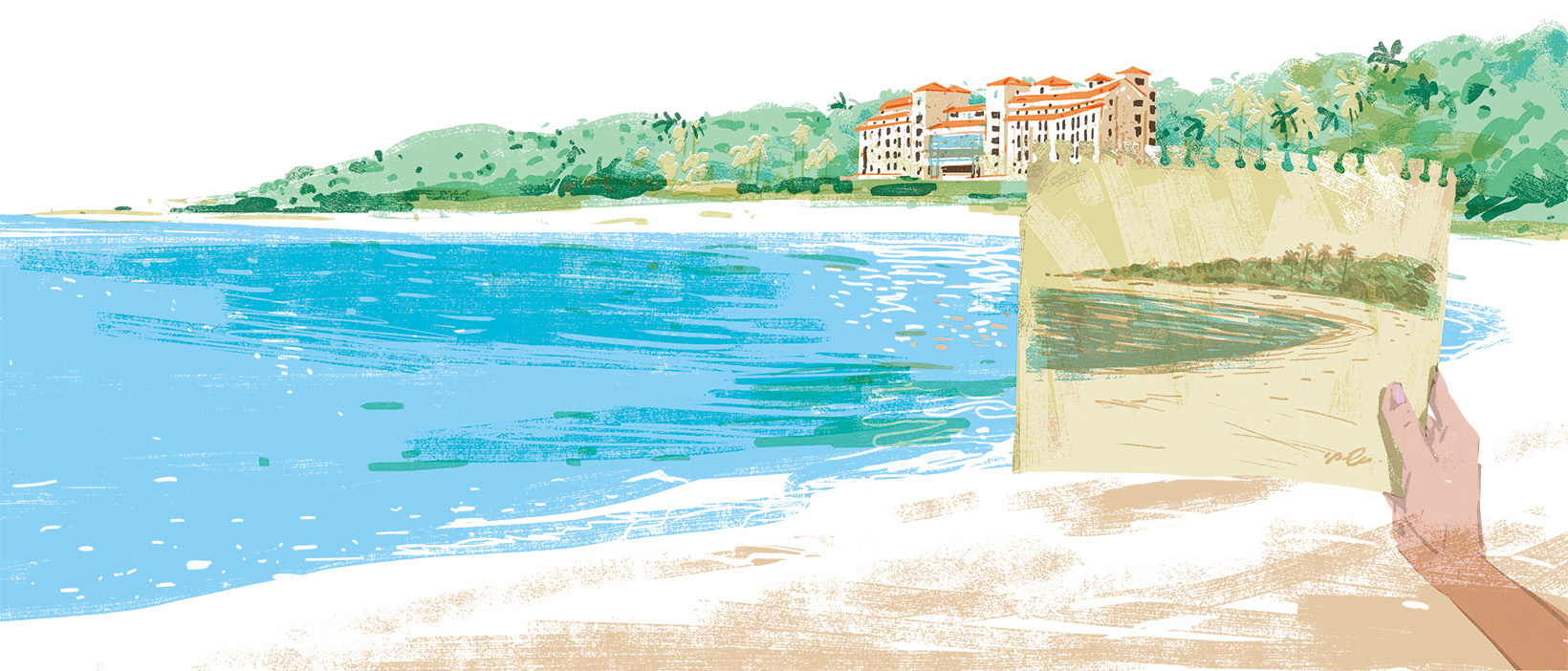
The Miramar Resort Village in Taitung:
from Land Justice to Environmental Impact Assessment
The Miramar Resort Village is a Build–Operated–Transfer (BOT) project at Fudafudak (Chinese name Shanyuan) in Beinan Township, Taitung County. The development includes the construction of a five-story resort hotel with 73 rooms in total. In 2003, the Taitung Country Government signed the BOT contract with Miramar Resort Taitung Ltd, in which the Shanyuan bay area was leased to the developer for construction and management. At the application stage of development, however, the Miramar Group intentionally divided the land into smaller segments to circumvent the required environmental impact assessment (EIA), which provoked massive protests from the public and indigenous people.
While construction was underway, lawsuits against the project were also filed. Not only did indigenous civil societies launch protests, but environmental groups held discussions about potential ecological damage, and the EIA issues to express their objection. Local artists also participated by organizing activities in the form of artistic creations to point out the unreasonable issues about the project. The Anti-Miramar Resort Coalition (aka Fan Fan Fan, FFF) was hence formed collectively by these activists.
Indigenous people groups argued that the processes of land acquisition and nationalization in this project were conducted through unjust means. In the past, the Fudafudak area was where the Pangcah people lived and held traditional rites. But it was later nationalized by the central government through the mechanism of the modern legal system. In fact, this area is traditional territory that belongs to multiple Pangcah communities. Any type of land use or development, according to the Indigenous Peoples Basic Law, are not allowed without prior consultation with approval of the local communities. It was based on the grounds of land justice and the significance of traditional territories, that indigenous civil societies made their appeals to protest against the development project.
Despite this, however, it is undeniable that the lack of job opportunities makes it difficult for local people to sustain a living, and many have to move to cities for employment, which is still very common in most indigenous communities. Therefore, some of the locals are optimistic about the Miramar Resort project, expecting the construction of the hotel would create job opportunities ranging from housekeepers to managers for locals. They also anticipate that the wave of tourism thus brought up would create new business opportunities for this remote coastal area, and in turn attract more young people to return home to reinvigorate their communities. Such imagination and expectations could also be attributed to the fact that resources are unevenly distributed among indigenous communities, which results in community elders’ pessimism about the community’s future.
Although it is inappropriate to blindly conclude that commercial developments will invariably make negative impacts on the environment and local cultures, it is undeniable that the Miramar Group has violated the initial procedures by deliberately circumventing the EIA mechanism. In 2016, the Supreme Administrative Court ruled that the project be revoked, but today issues remain unresolved about how to deal with the illegal construction left behind on the beach.
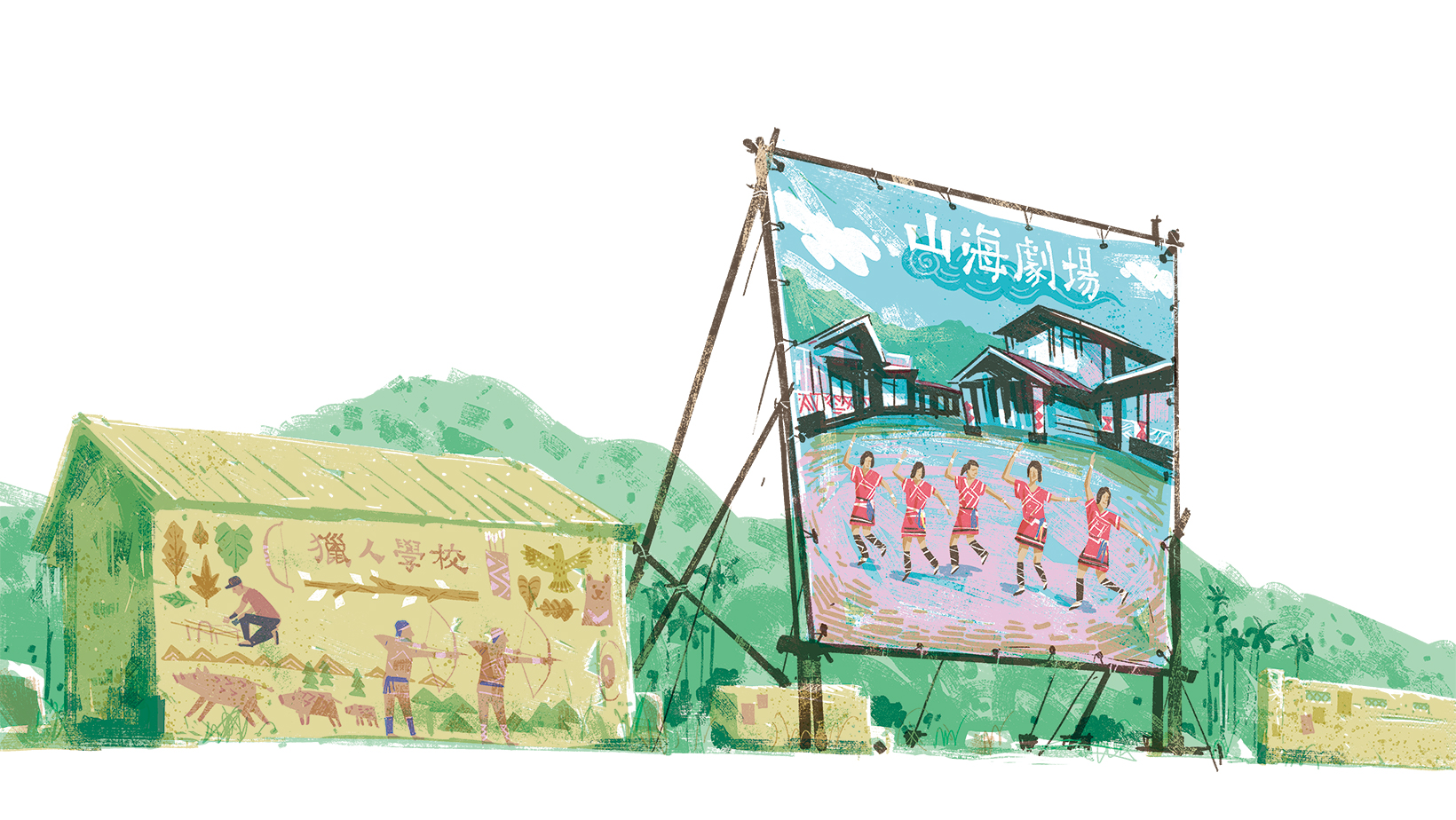
The Shanhai Theater Development Project:
Public Facility Plan Led by Local Government
Unlike the Miramar Resort Village BOT project, in which the Taitung County Government released land for the developer to build and operate resort hotels, the Shanhai (“mountain-sea”) Theater project in Hualien, is led by the government alone to build public facilities for exhibitions and performances. The construction and management are handled by the Hualien County Government. These two cases are fundamentally different in that the former is a commercial development project jointly planned by the public and private sectors, while the latter is one that aims at creating public interest. Because the purposes of the facilities are different, the expected benefits also differ, and so do their potential impacts on local indigenous communities.
As is planned by the authorities, the Shanhai Theater Development Project is to build a public space for cultural exhibitions and performances based in Fengbin Township, Hualien County. The search for the construction site began in 2012. Originally, the government selected the Ca'wi (Chinese name Jingpu) community, which lies to the south of the Siouguluan Estuary, but was opposed by the residents. They were concerned that land development would impact the ecology of the estuary and feared that their land would be expropriated. Most importantly, they were reluctant to let their singing and dancing culture be treated as cheap commercial performance and deprived of its underlying rich cultural significance.
Having been rejected by the Ca’wi community, the county government turned to seek for other alternatives and finally found the Kaluluan (Chinese name Jiqi) community in the northern coastal area of Fengbin Township. The authorities planned to base the theater park at the disused Jiqi Elementary School, from which the construction would be extended. They also planned to add a square to the main construction, which was to be managed by the community residents themselves, while the operation of the theater park would be outsourced to private businesses. After acquiring the residents’ consent through community meetings, construction and preparation for the operation was officially launched.
Yet at the same time, young members of the Ca’wi community held different views about the project. Before this, they had begun to promote local tourism by initiating such programs as the community kitchen, in-depth travel, space transformation, and accommodation experience. With these collective efforts, they hoped to develop tourism from the locals’ perspective, to attract tourists to experience their indigenous culture in depth. However, if tourism is promoted in the form of government-led development projects, it would only bring in swarms of visitors who just do a cursory walk, around the community without creating substantial economic benefits, and would create a severe burden to the traffic and the environment.
The present construction of the Shanhai Theater has been contracted out. Despite the consent of the community meeting, however, it still requires both the government and the community to reflect on the question; whether the development project will, once completed, meet the Kaluluan people’s expectations to create job opportunities and economic benefits, or otherwise let indigenous culture deteriorate into commercial performances.
Who is the Ultimate Winner
in the Pursuit of Tourism Benefits?
Apart from the East coast, where flows of developers swarm in to launch projects, the traditional territories of the Thao people at Sun Moon Lake, Nantou County, are also targeted by the developer of the Peacock Garden BOT Project. The environment of Sun Moon Lake, which is surrounded by numerous hotels and tourist facilities, has been pocked with scars of over-development. Over recent years development projects sprang up one after another in this area, ushering in waves of tourists. Yet the local Ita Thao people were far from happy but instead were saddened by such prosperity. They protested strongly against the Peacock Garden project, because of its violation of procedures by initiating the tendering process without the community’s consent. This ended up with all the community representatives voting against the project at the community meeting. The community considered it unnecessary to launch any large construction plans at Sun Moon Lake since the site has been packed with hotels. What they truly needed was appropriate planning and utilization of land to promote the preservation of indigenous culture, rather than commercial development.

Take, for example, the above three large BOT projects have made a profound impact on Taiwan’s indigenous peoples. They are different in the types of facilities and benefits they aim to create. The Miramar Resort Village and the Peacock Garden are large hotels, whose shared benefits derived from business operation usually going to certain individuals, and flows of tourists thus brought in, can hardly reach local communities. This may lead to a difficult situation for communities in which they cannot benefit from the project at all, and even have to suffer the environmental damage thus caused. Hence it is not surprising that such BOT projects may spark a backlash from local residents. The Shanhai Theater, on the other hand, is a public tourism facility that aims to create benefits for the locals. The authorities responded to the community’s need for holding public activities by incorporating the design of Kaluluan Plaza into the planning of the park. The community can further create their own benefits by rolling out catering services, accommodation, guided tours, and experience activities. This approach will no doubt benefit the development of the community’s tourism industry.
Drawing Blueprint for Industrial Development
from the Bottom Up
 It is nothing new that the tourism industry thrives in indigenous communities. Many communities are trying to seek new ways to incorporate their distinctive features into sightseeing and tourist activities. Indigenous communities make efforts from the bottom up, by putting forth their requirements for developing tourism. They resume the right to interpret their own cultures through the implementation of programs and cultivation of talents. This also an attempt to create more substantial business opportunities and economic activities in local communities.
It is nothing new that the tourism industry thrives in indigenous communities. Many communities are trying to seek new ways to incorporate their distinctive features into sightseeing and tourist activities. Indigenous communities make efforts from the bottom up, by putting forth their requirements for developing tourism. They resume the right to interpret their own cultures through the implementation of programs and cultivation of talents. This also an attempt to create more substantial business opportunities and economic activities in local communities.
Perhaps, when trying to strike a balance between tourism and the development of indigenous communities, we should take more time to consider what kind of development is expected by communities themselves. Do they have any choices other than “yes” or “no”? We need to think outside the box to avoid the limited imagination of development within communities, and have all community members to debate together how to make the best use of their land, and facilitate the sharing of benefits. By doing so are able to further develop an ideal type of industry that meets the community’s needs in supporting the continuation of culture, and sustainable development.
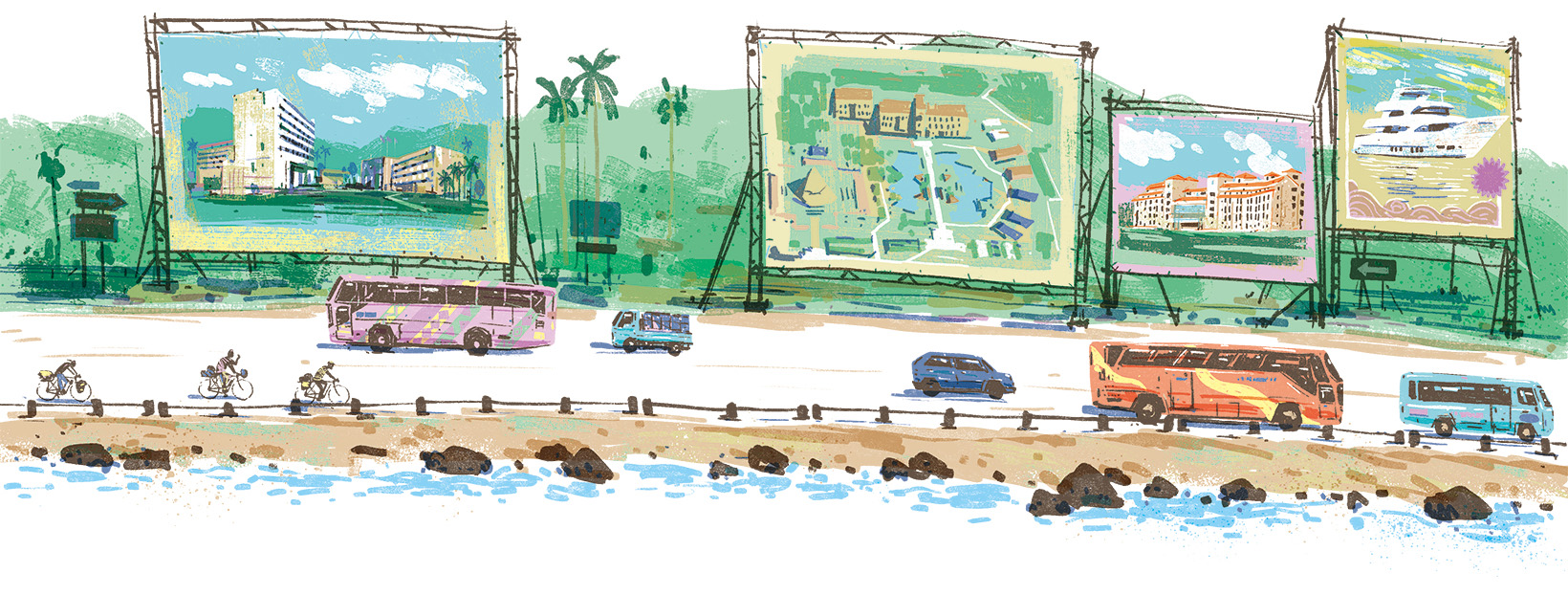
─ REDERENCES ─
<美麗灣的環評與發展想像>,地球公民基金會:https://www.cet-taiwan.org/node/1666,2013年。
<【來自花東的信息】狼煙升起 部落心聲「船」不進總統府>,環境資訊中心:https://e-info.org.tw/node/85288,2013年。
<在地人嗆學者 美麗灣戰火北燒>,中國時報美麗灣事件簿:http://www.miramarfacts.com.tw/article.aspx?aid=182,2012年。
<花東四百億,勿讓豐濱山海劇場成為美麗灣第二!>,地球公民基金會:https://www.cet-taiwan.org/node/1706https://www.cet-taiwan.org/node/1706,2013年。
<原民山海劇場暨加路蘭廣場 計畫啟動>,更生日報:http://www.ksnews.com.tw/index.php/news/contents_page/0001054551,2012年。
<山海劇場轉向磯崎? 花縣推「唱歌跳舞」8計畫討東發基金>,環境資訊中心:https://e-info.org.tw/node/107564,2015年。
<反日月潭孔雀園BOT案 邵族人立牌怒吼>,自由時報:https://news.ltn.com.tw/news/local/paper/952607,2016年。




